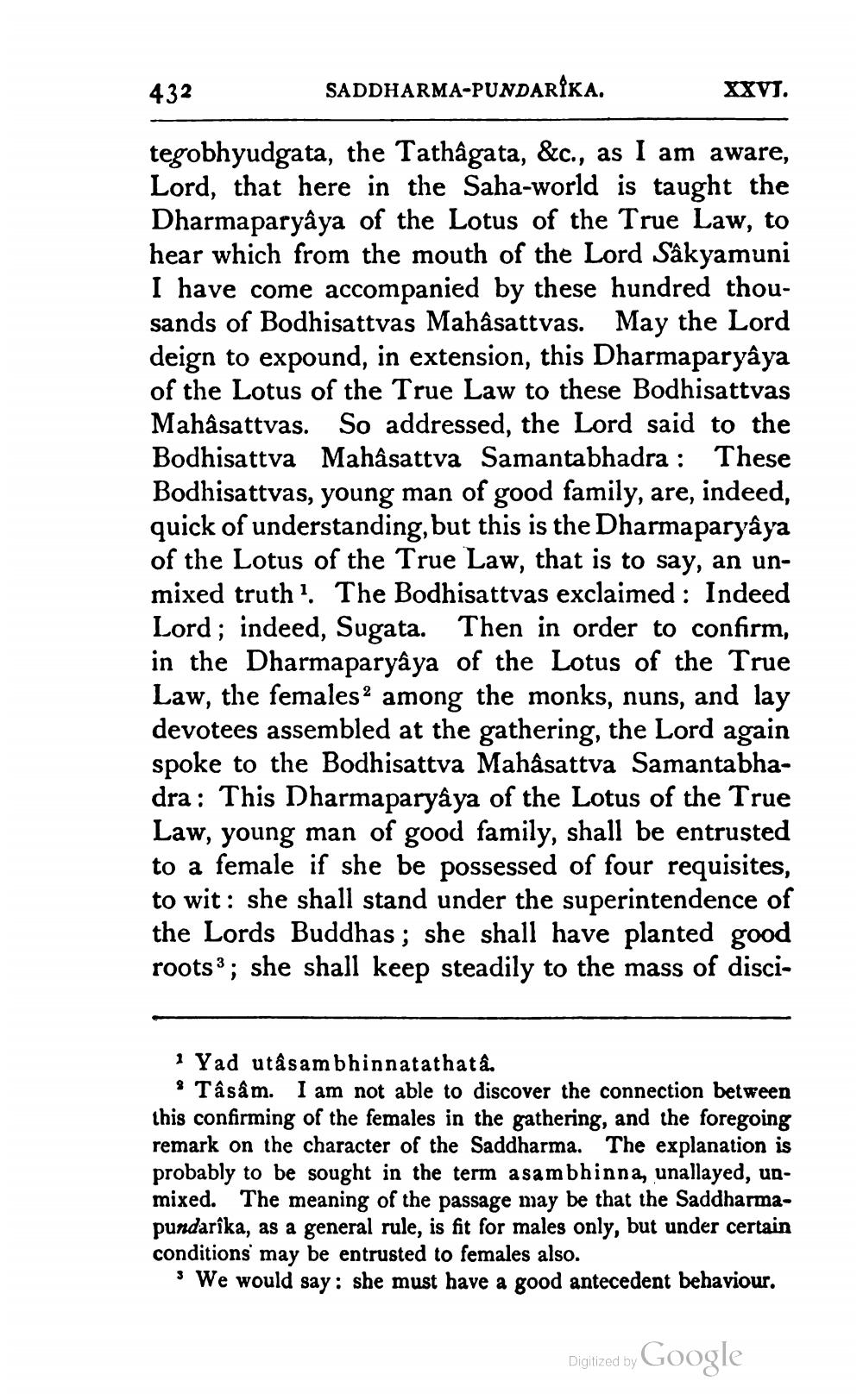________________
432
SADDHARMA-PUNDARÍKA.
XXVI.
tegobhyudgata, the Tathagata, &c., as I am aware, Lord, that here in the Saha-world is taught the Dharmaparyâya of the Lotus of the True Law, to hear which from the mouth of the Lord Sâkyamuni I have come accompanied by these hundred thousands of Bodhisattvas Mahâsattvas. May the Lord deign to expound, in extension, this Dharmaparyâya of the Lotus of the True Law to these Bodhisattvas Mahâsattvas. So addressed, the Lord said to the Bodhisattva Mahâsattva Samantabhadra: These Bodhisattvas, young man of good family, are, indeed, quick of understanding, but this is the Dharmaparyâya of the Lotus of the True Law, that is to say, an unmixed truth. The Bodhisattvas exclaimed: Indeed Lord; indeed, Sugata. Then in order to confirm, in the Dharmaparyâya of the Lotus of the True Law, the females among the monks, nuns, and lay devotees assembled at the gathering, the Lord again spoke to the Bodhisattva Mahâsattva Samantabhadra: This Dharmaparyâya of the Lotus of the True Law, young man of good family, shall be entrusted to a female if she be possessed of four requisites, to wit: she shall stand under the superintendence of the Lords Buddhas; she shall have planted good roots 3; she shall keep steadily to the mass of disci
1 Yad utâ sambhinnatathata.
: Tâsâm. I am not able to discover the connection between this confirming of the females in the gathering, and the foregoing remark on the character of the Saddharma. The explanation is probably to be sought in the term asambhinna, unallayed, unmixed. The meaning of the passage may be that the Saddharmapundarîka, as a general rule, is fit for males only, but under certain conditions may be entrusted to females also.
* We would say: she must have a good antecedent behaviour.
Digitized by Google




